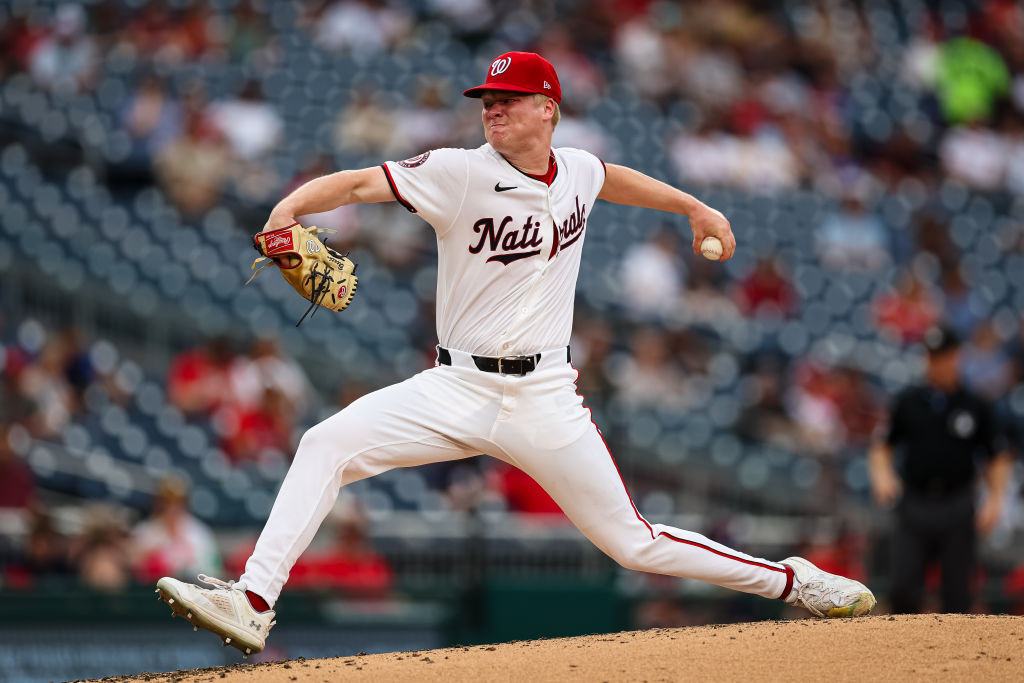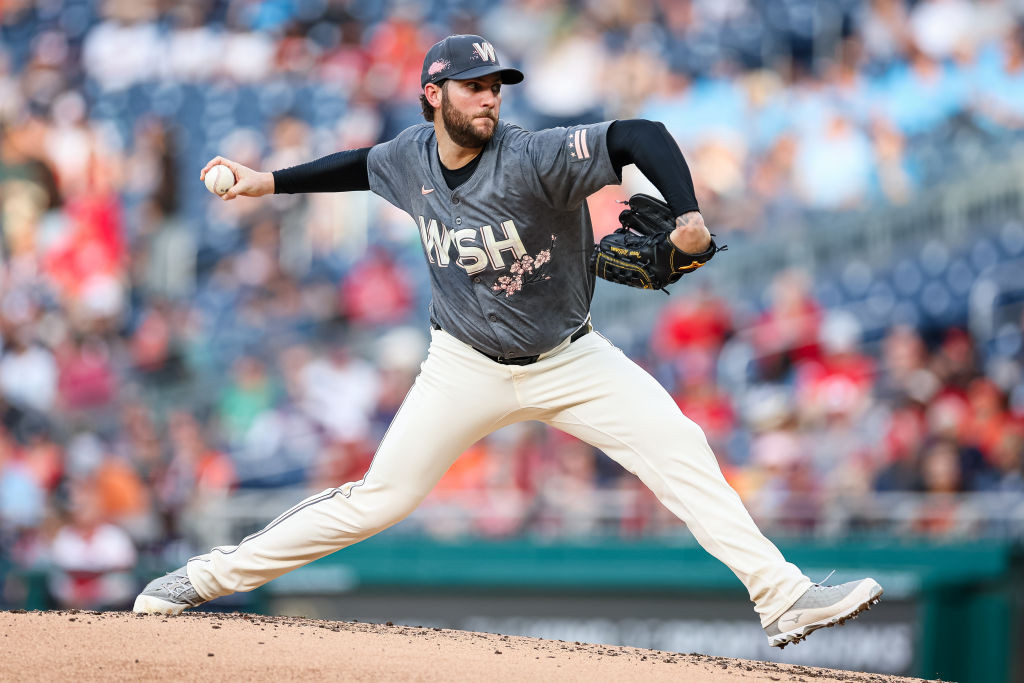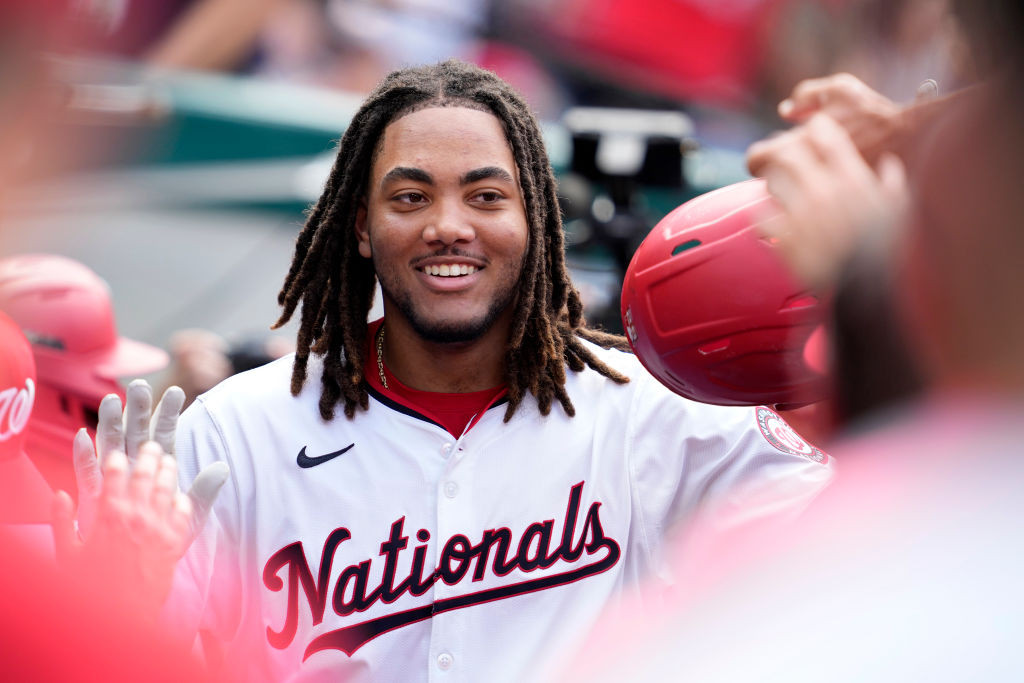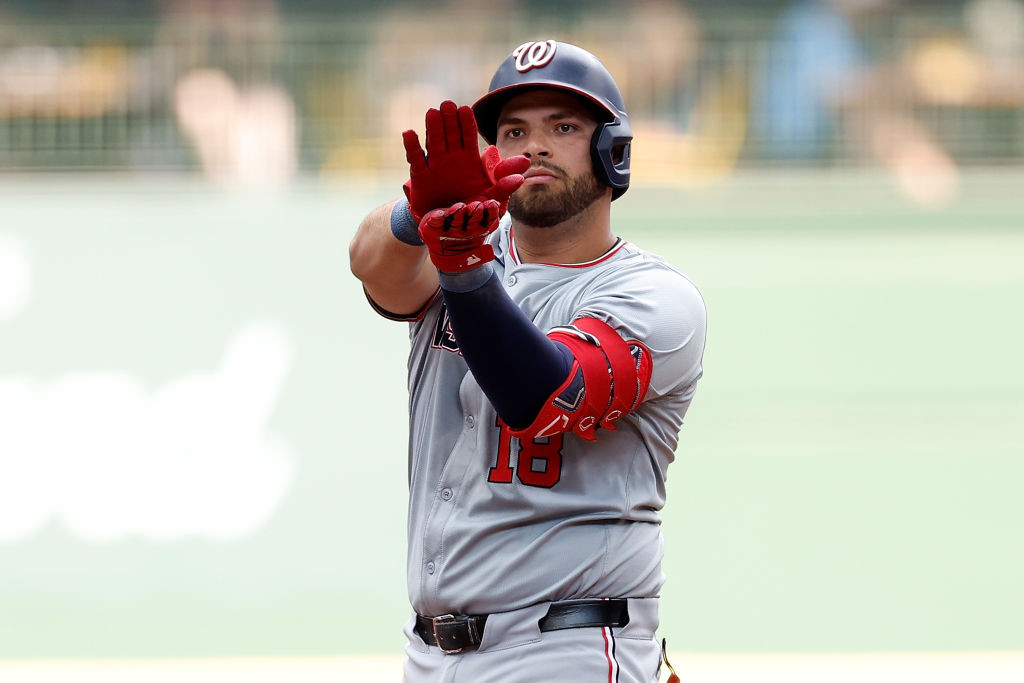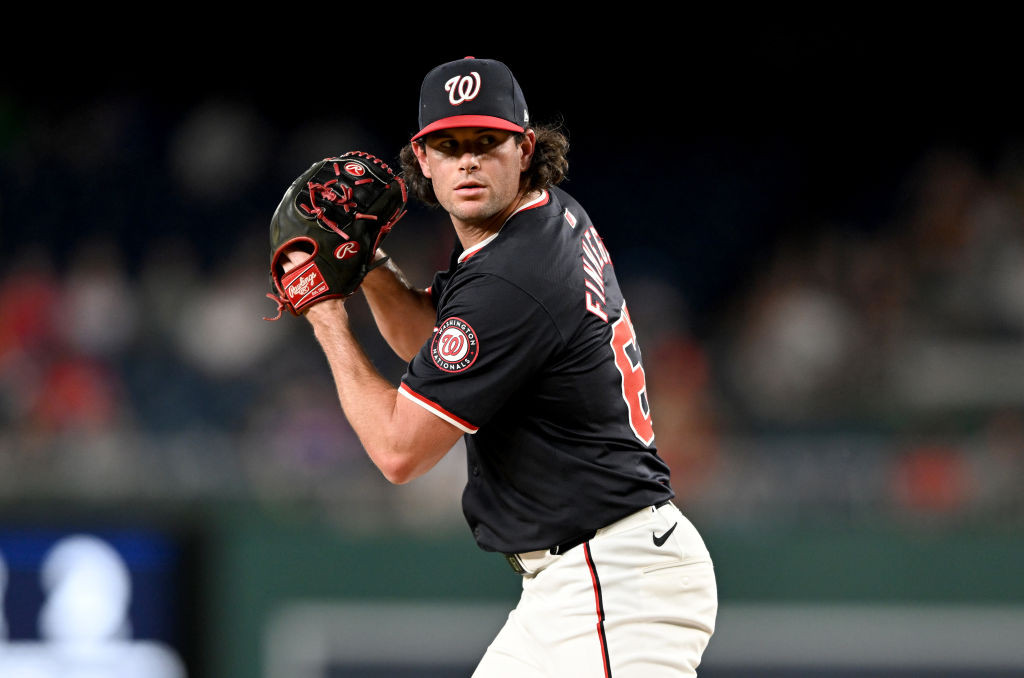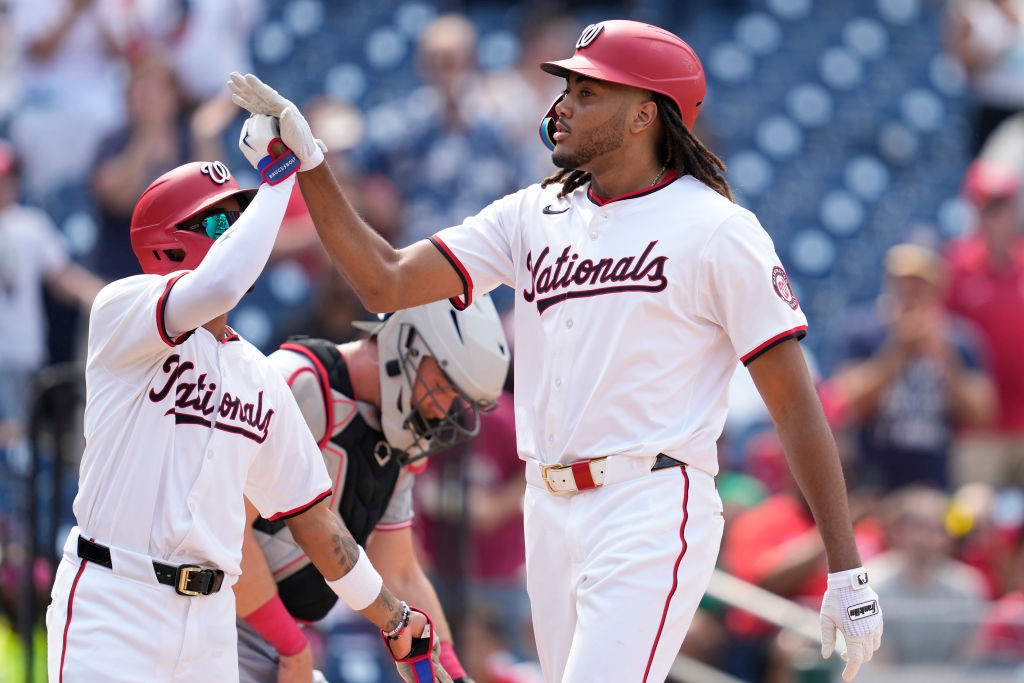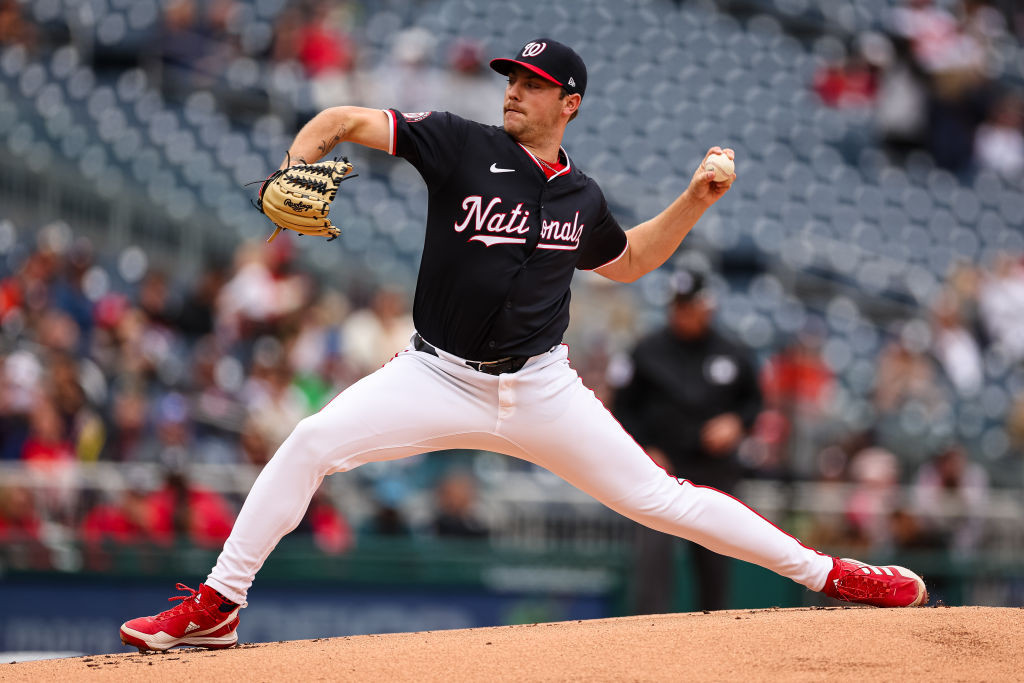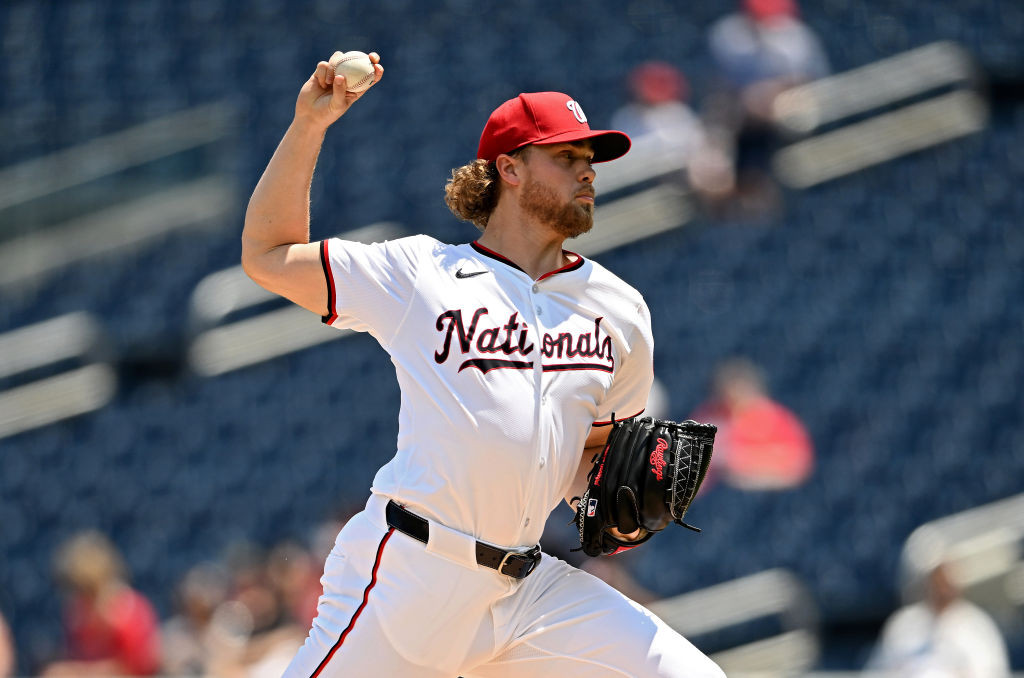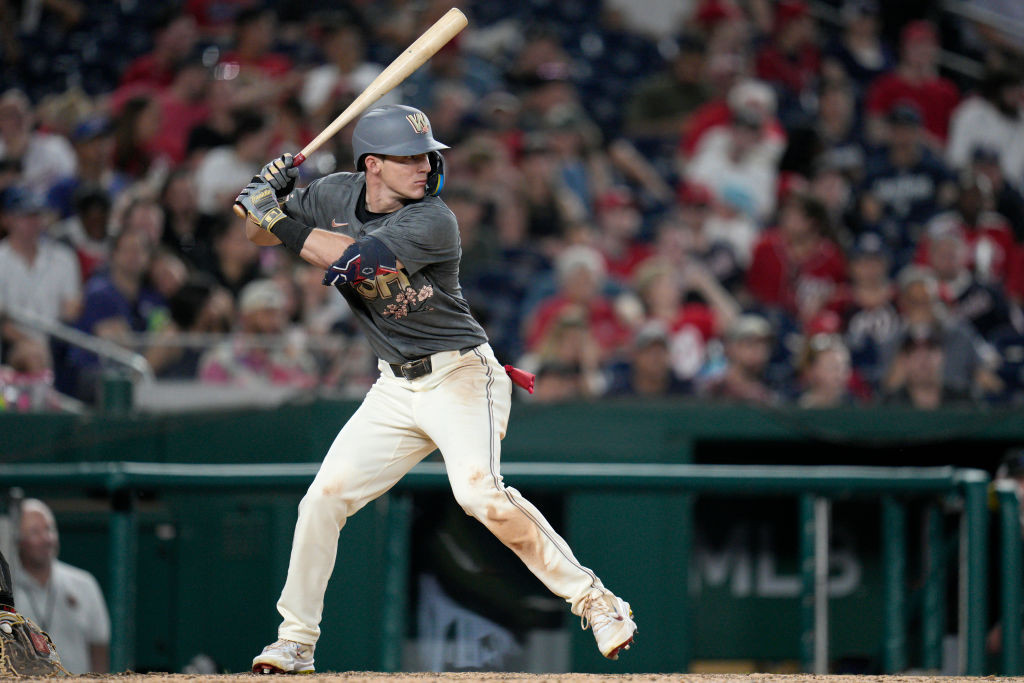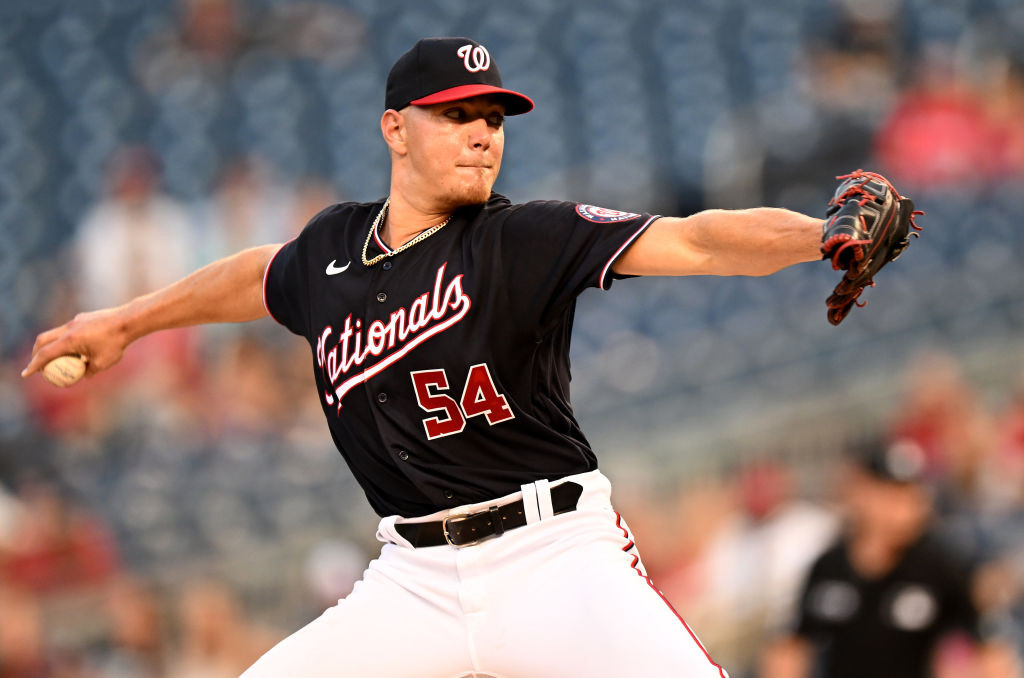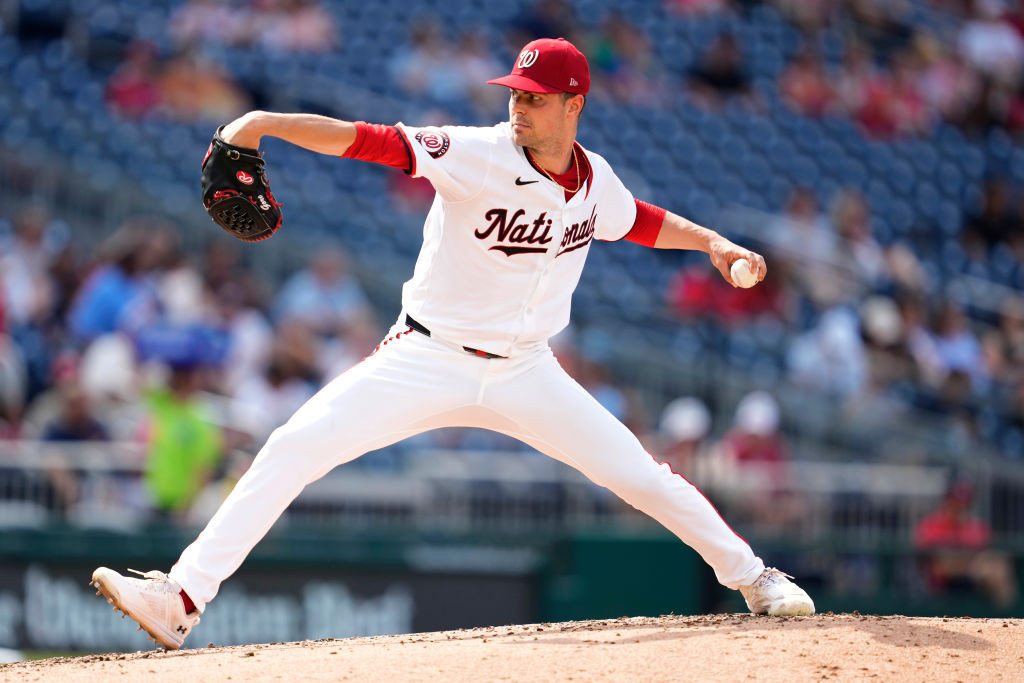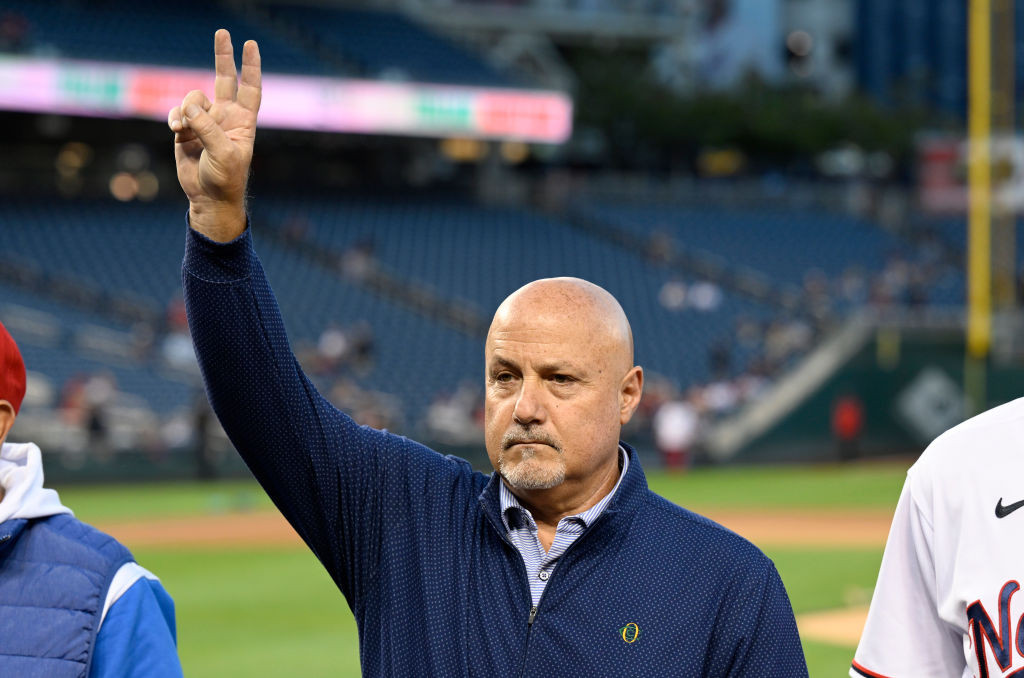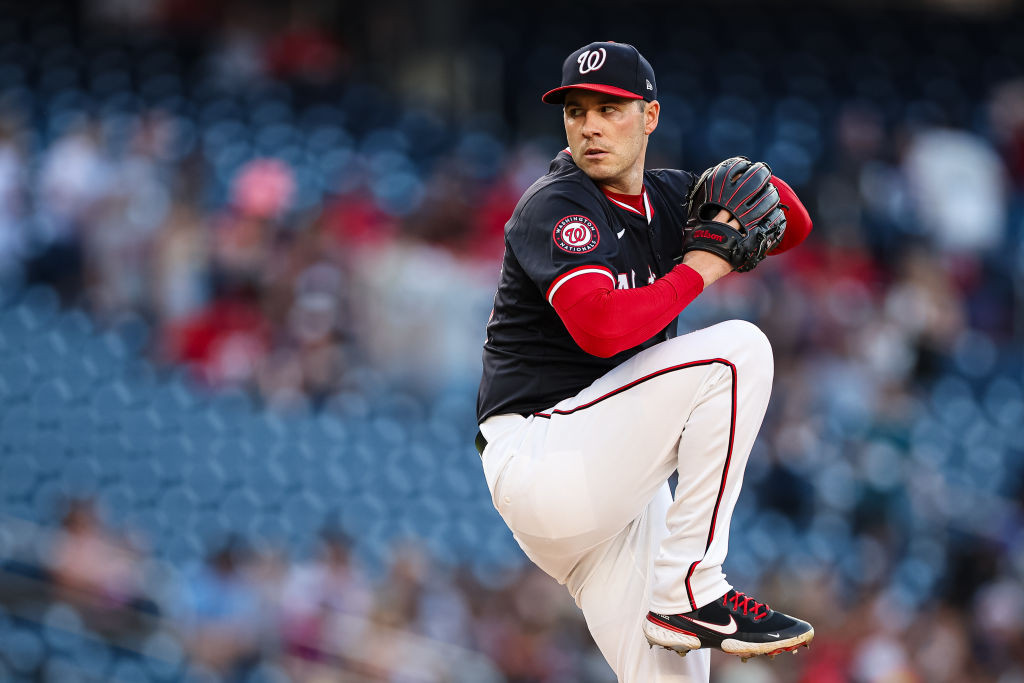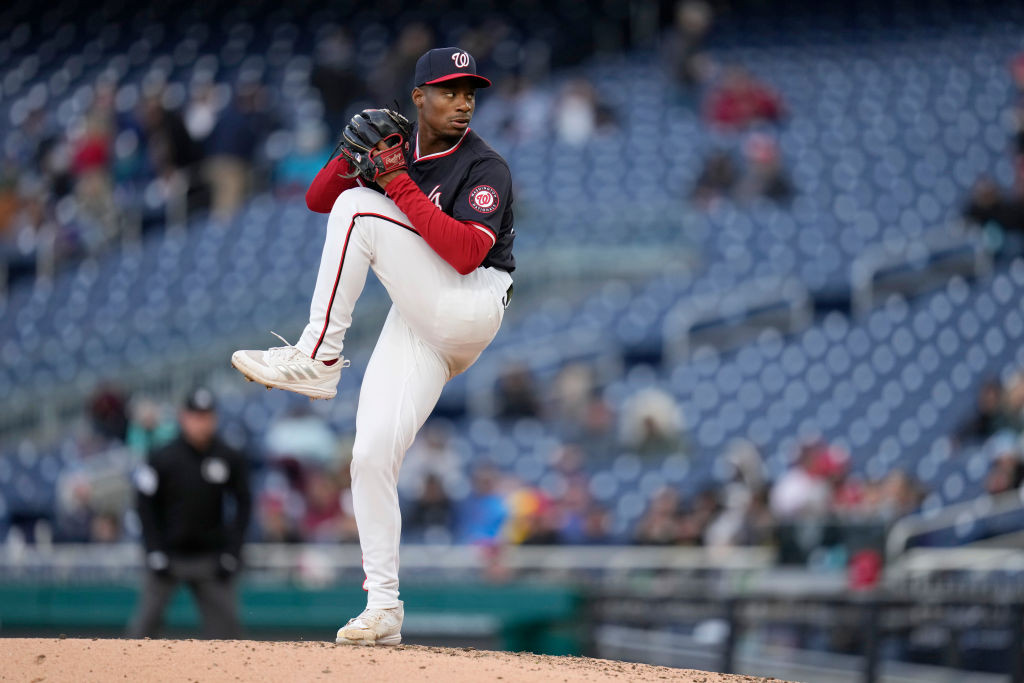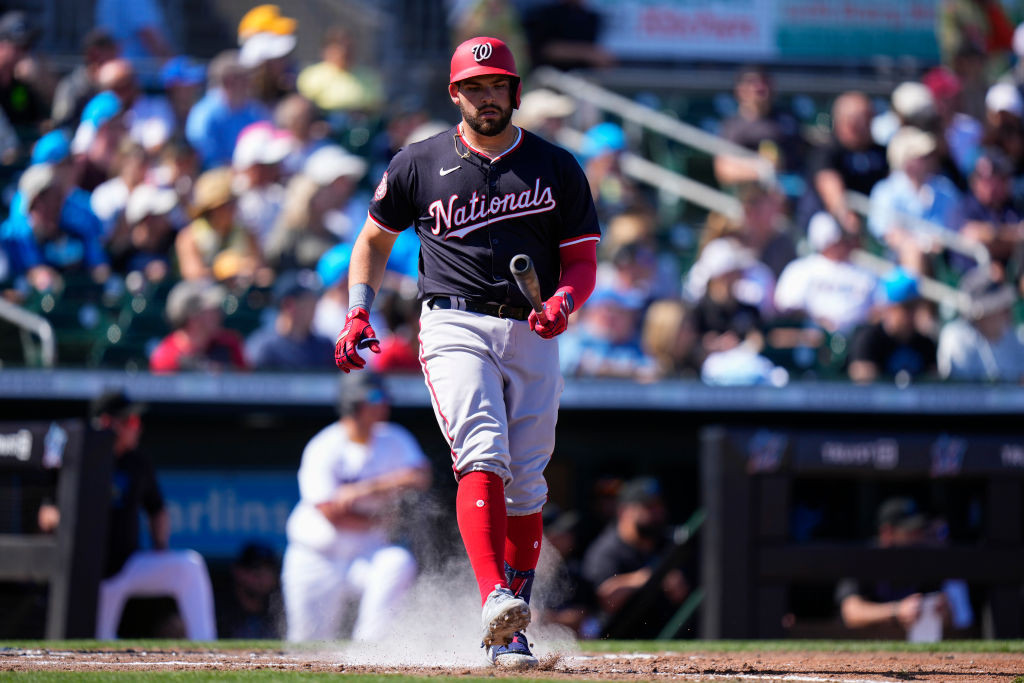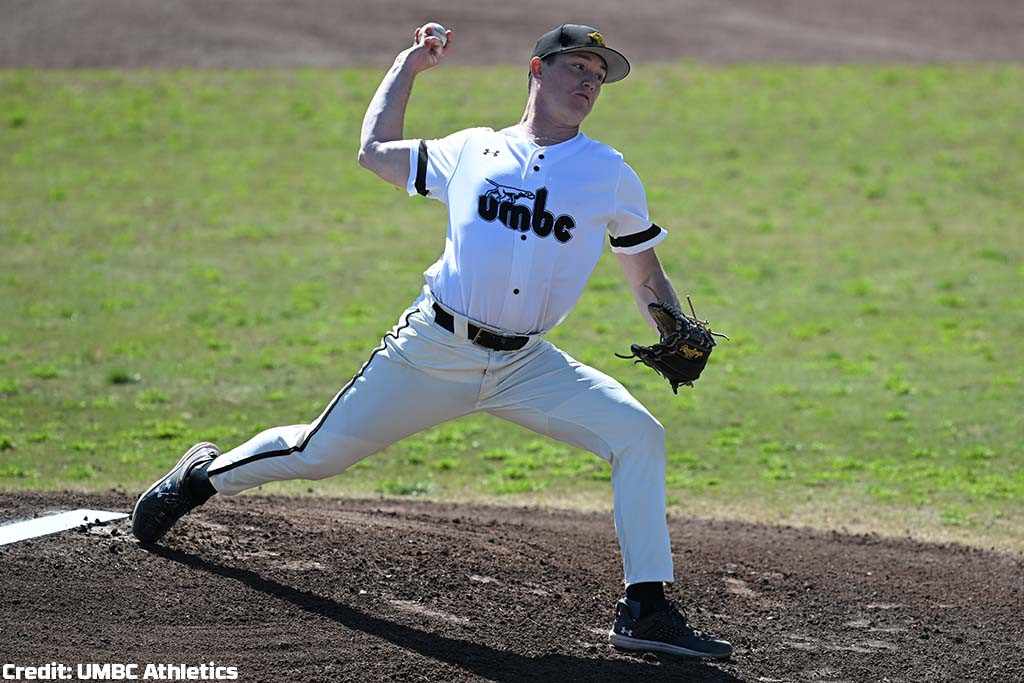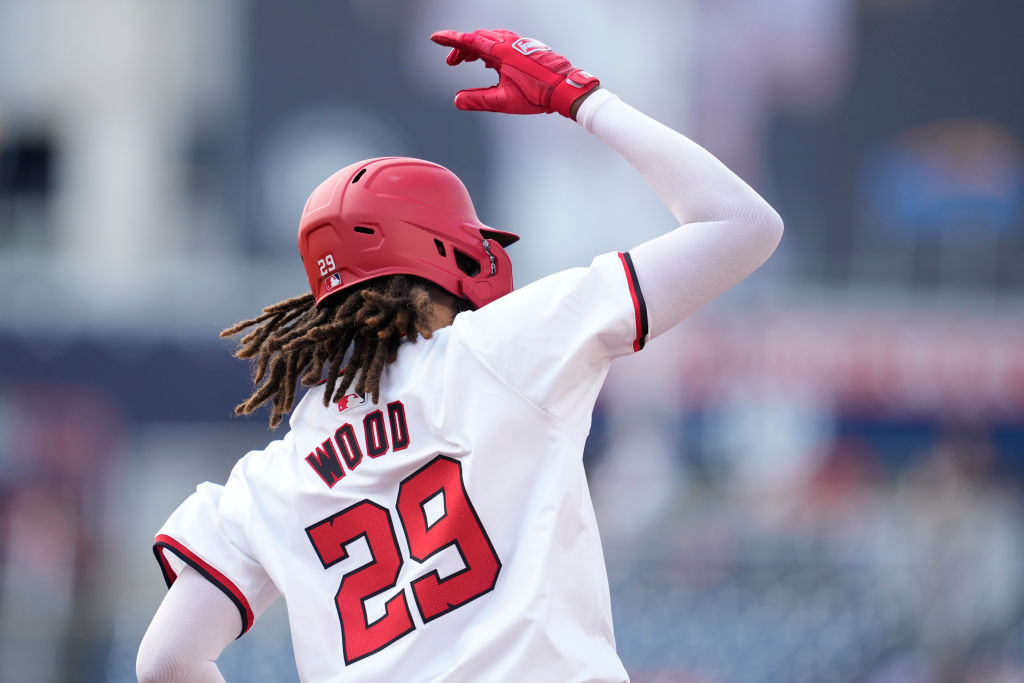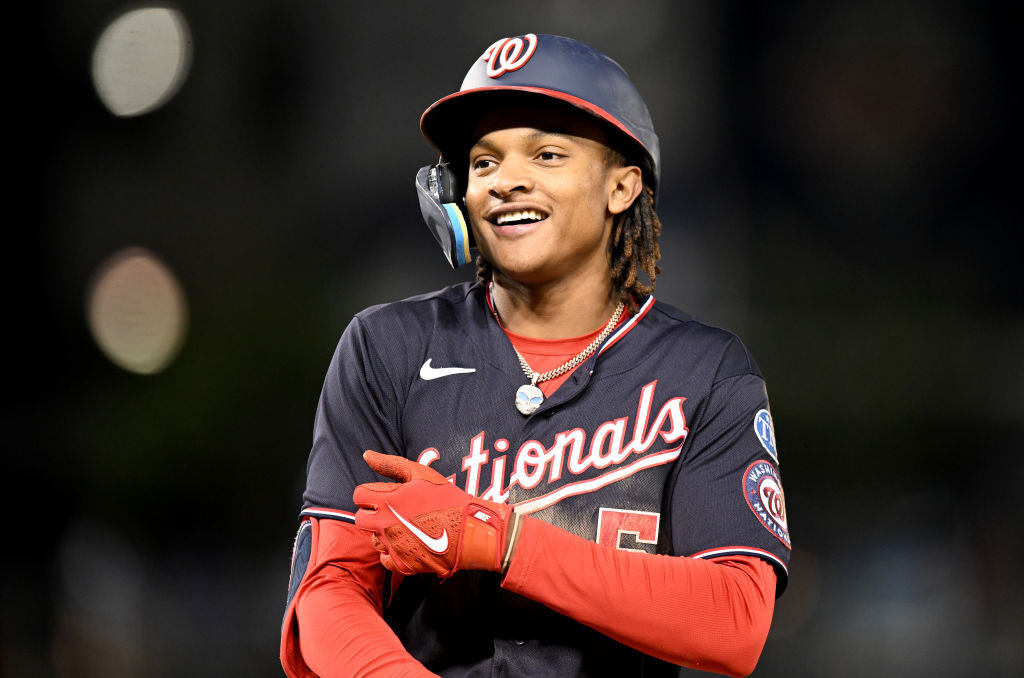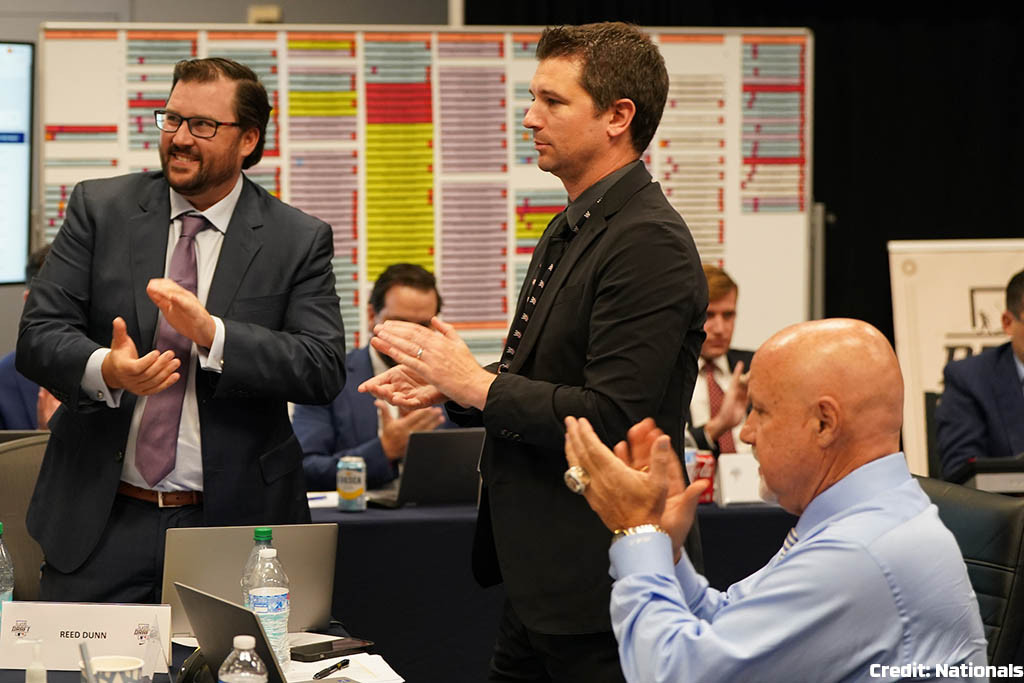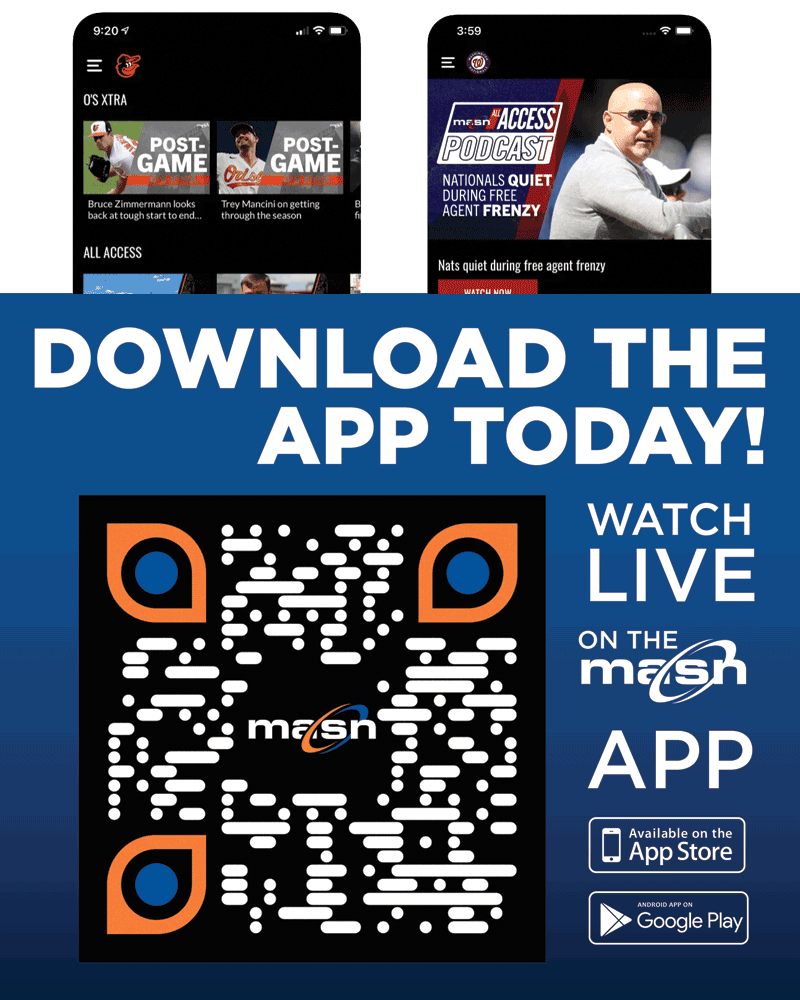After a weekend sweep of the Reds that included a series of notable rallies and some long-awaited power displays from a lineup that desperately needed it, the Nationals returned tonight to face the Padres hoping for at least some carryover effect.
Instead, they got the exact opposite. During the course of a lackluster 4-0 loss, they did very little at the plate, squandering the scoring opportunities they had and rarely hitting the ball with any real authority.
Thus did the Nats lose for the first time since the All-Star break, missing a chance to sustain some positive momentum with a tepid showing at the plate against an unheralded opposing pitcher.
Randy Vasquez, a 25-year-old right-hander who has given up a bunch of hits – especially homers – this season, combined with three San Diego relievers to shut out the Nationals on only 102 pitches.
"We hit some balls hard, but we just couldn't get any good swings off," manager Davey Martinez said. "We swung the bats today, but we really didn't work good at-bats."
The Nationals used the days before and after the All-Star break to carry an extra reliever. Turns out they only used him once before sending him back to the minors.
Eduardo Salazar, who impressed in his July 14 outing against the Brewers, was optioned to Triple-A Rochester this afternoon, a move necessitated by the return of DJ Herz, who starts tonight’s series opener against the Padres.
Salazar, who posted eye-popping numbers in nine games with Rochester after the Nationals claimed him off waivers from the Mariners last month, was called up for the final two days before the All-Star break when the club could afford to carry a ninth reliever. He pitched two innings in the first half finale in Milwaukee, striking out four batters with a sharp-breaking slider, though he also issued two walks in that game.
The Nats kept the nine-man bullpen for last weekend’s series but never summoned Salazar while sweeping the Reds. So the 26-year-old now heads back to Triple-A, where he’ll hope to make an impression again and earn his way back to the majors.
“I think we will see more eventually,” manager Davey Martinez said. “The thing about it that’s tough is, one, he’s got options. Two, he’s a depth piece for us. But he threw the ball really well. So I’m sure we’ll see more of Salazar.”
The Nationals couldn’t have asked for a better start to their second half, sweeping the Reds over the weekend in impressive fashion. Now they’ll have to try to keep it going against a team that recently swept them.
The Padres are in town, and it was only four weeks ago when they won three straight against the Nationals during a wild series in San Diego that ruined a lot of positive momentum they had built up earlier in June.
One of those games at Petco Park was started by DJ Herz, who makes his return to the big leagues tonight after officially getting recalled from Triple-A. (Reliever Eduardo Salazar was optioned to Rochester to clear up that roster spot.) Herz essentially got a 16-day break since he last pitched up here, making only one abbreviated start for Rochester to keep his arm fresh. It will be fascinating to see how the rookie left-hander returns, and whether he can find some level of more consistency than he showed in his first stint.
Right-hander Randy Vasquez is tonight’s opponent, and he will be a new face from the Nationals’ perspective, nobody on the current roster having faced him before. There will be a few ex-Padres in the lineup, though, with some extra motivation against the franchise that traded them. How will James Wood and CJ Abrams handle this assignment?
WASHINGTON NATIONALS vs. SAN DIEGO PADRES
Where: Nationals Park
Gametime: 6:45 p.m. EDT
TV: MASN2, MLB.tv
Radio: 106.7 FM, 88.7 FM (Spanish), MLB.com
Weather: Chance of rain late, 88 degrees, wind 7 mph out to left field
For three months, as he produced decent – but hardly spectacular – numbers in Rochester, Juan Yepez had little reason to believe he was a simple phone call away from Washington. He was, like so many others with big league experience, stuck at Triple-A, trying to make the best of a frustrating situation.
“For sure, I felt like the call felt far,” he said. “Honestly, I was surprised. I wasn’t expecting it. But I think I had trust that I was going to get my opportunity, and I’m just glad I had it.”
The call did finally come July 5, the Nationals deciding they couldn’t wait any longer for Joey Meneses to break out of his season-long slump. Meneses went down to Rochester. Yepez came up and was given the opportunity to prove he deserved to be the starting first baseman.
More than two weeks later, he’s done just about everything in his power to prove he does deserve the job.
Yepez has played 13 games with the Nats. He has recorded at least one hit in all 13 games. He has recorded at least one extra-base hit in eight of those games. He’s the proud owner of a .367 batting average, .437 on-base percentage and 1.008 OPS, the kind of production the team desperately needed from the most offensive-minded position on the field.
Forgive Kyle Finnegan if he has trouble remembering what day it currently is, or where he’s been over the last week.
A quick refresher course, then. On Sunday, Finnegan was with the Nationals in Milwaukee, having just pitched three straight days. On Monday, he and his family were in Hershey, Pa., enjoying their All-Star break at an amusement park. Until he got the call from Nats general manager Mike Rizzo he had just been selected as a last-minute addition to the National League’s All-Star team.
So on Tuesday, the Finnegan family surprisingly found itself in Arlington, Texas, getting the full All-Star experience (even though he didn’t pitch in the game). Wednesday and Thursday finally offered an opportunity to rest up a bit. But then Friday, Saturday and Sunday, Finnegan found himself on the mound at Nationals Park, recording the final out in three consecutive victories over the Reds to cap off a wild week.
“A lot has happened,” he said. “It’s been exciting. It’s been a little hectic. But I was talking to my wife: The experience we’ve been able to have with our family over these last four or five days has been really special. That’s the beautiful part about this game and what it can bring into your life.”
Finnegan wouldn’t trade any of it for the world. Though he was the only one of 12 pitchers on the active NL All-Star roster who didn’t appear in the game, he otherwise got to partake in everything the Midsummer Classic had to offer. (Oh, and by the way, had the NL rallied from a 5-3 deficit in the top of the ninth, he would’ve been the one closing out the game in the bottom of the inning.)
The formula that won Saturday night’s game wasn’t going to be plausible today. The Nationals simply couldn’t afford another ultra-abbreviated outing from their starter, putting even more strain on an already strained bullpen.
So Jake Irvin did his part, rediscovering the form that made him one of the league’s breakout pitchers in the first half of the season. And then James Wood made sure that pitching performance would count with one huge late swing.
Wood’s three-run homer off reliever Justin Wilson turned a tie game in the bottom of the eighth into a 5-2 Nats victory and a three-game sweep of the Reds to kick off the season’s second half in decidedly upbeat fashion.
"We're right there with them," Wood said of a Nationals team that has won five of six and currently sits four games out of a wide-open Wild Card race. "We're trying to make a push, too."
Wood stepped to the plate with two out and two on in the eighth, Cincinnati manager David Bell summoning Wilson specifically to face him. The rookie had batted against the veteran left-hander Saturday night, grounding out on the fifth pitch of that at-bat. He wasted no time today, aggressively going after Wilson’s first-pitch fastball and driving it 404 feet to left for his second career homer.
The second half schedule afforded the Nationals the option of waiting a while before using their fifth starter. They’ve decided, though, to go ahead and use him now.
The Nats will send that yet-to-be-announced starter to the mound Tuesday against the Padres in what is actually the team’s fourth game coming out of the All-Star break. That pushes left-hander Mitchell Parker back to Wednesday’s game, with Patrick Corbin (who started Friday night’s second half opener) pitching Thursday’s series finale against San Diego.
The presence of an off-day on the schedule this week gave the Nationals some room to maneuver if they wished. They don’t actually need a fifth starter until Saturday’s game in St. Louis, the eighth game coming out of the break.
But rather than offer all of the extra rest to one pitcher, the club decided to give others (especially Parker) an extra day before taking the mound.
“Exactly, that’s what it boils down to,” manager Davey Martinez said. “We want to try to give these guys as much rest as we possibly can. Some of these guys are going to pitch a lot more than they have in the past, so we’re trying to just stretch this out a little bit.”
The Nationals have already won back-to-back series. Now they have a shot at a rare series sweep if they can beat the Reds again in this afternoon’s finale.
Though they’ve somehow managed to win a pair of games in the last week in which their starter didn’t even reach the third inning, that’s probably not a formula for sustained success. So it would behoove Jake Irvin to be good today, and to give his team some length so Davey Martinez doesn’t have rely too heavily on a bullpen that’s already worn down only two games into the second half of the season.
Irvin is coming off back-to-back rough starts, though, which took some of the luster off his breakthrough first half. The right-hander’s issue in those games against the Mets and Brewers: He was hit hard, to the tune of 13 runs on 18 hits over 10 innings. That was a pretty stark drop-off after back-to-back starts in which he surrendered only one hit.
The Nationals face another left-hander today in Andrew Abbott. He’s been solid in 40 career starts, but the Nats did get to him for six runs in 5 2/3 innings last August in Cincinnati. The University of Virginia alum has walked 22 batters over his last 37 1/3 innings, so patience is a virtue against him this afternoon.
WASHINGTON NATIONALS vs. CINCINNATI REDS
Where: Nationals Park
Gametime: 1:35 p.m. EDT
TV: MASN, MLB.tv
Radio: 106.7 FM, 88.7 FM (Spanish), MLB.com
Weather: Partly cloudy, 89 degrees, wind 5 mph out to left field
That the Nationals had to ask for at least seven innings from their bullpen for the second time in four games was aggravating. That they somehow were still in position to win another one of these games was absolutely remarkable.
And yet here the Nats were once again, forced to turn to the bullpen early after an extra-abbreviated outing from their starter. And here they were once again finding a way to emerge victorious at the end of the night, storming back from an early deficit created by MacKenzie Gore to beat the Reds, 5-4.
"Well, that was a grind," manager Davey Martinez sighed. "The boys played hard. They played with their heart."
They pulled it off by chipping away at Cincinnati’s early lead, scoring two runs in the first, one in the fourth, one in the seventh and one more in the eighth on Jacob Young’s clutch two-out RBI single.
And they pulled it off thanks to another brilliant performance by a relief corps asked to work overtime after Gore lasted only two laborious innings.
Cade Cavalli hoped all along to make his return from Tommy John surgery in June. And if not June, at least by July. But as the clock continues to tick and the right-hander still finds himself waiting to restart the latest phase of his extensive rehab program, it has become clear the Nationals are only going to be able to get a handful of big league starts out of their 2020 first-round pick before season’s end.
Cavalli, who had elbow ligament replacement surgery in March 2023, has made only three official minor league rehab starts, none since June 21 for Single-A Wilmington. In the month since that outing – he tossed three scoreless, hitless innings – he has been sidetracked both by the flu and a period in which he experienced “dead arm” when he threw.
The dead arm period, which manager Davey Martinez revealed for the first time today, prompted the Nats to further delay Cavalli’s throwing progression.
“We just wanted to keep him down, and honestly slow him down a little bit,” Martinez said. “He had that dead arm for a little while. And him being sick, we just didn’t want to push him. … It’s one of those things, he’s so young and he’s a big part of our future. We want to make sure we do everything right for the kid. We talked to him. He was in agreement. He wanted to take a little bit of a break, and then we’ll go from there.”
Cavalli, who turns 26 next month, remains in D.C. with the Nationals. He’s scheduled to go to West Palm Beach, Fla., next week and start his progression all over again, throwing off flat ground, then off a mound, then against live hitters before he goes on another rehab assignment.
Though it got way more interesting in the top of the ninth than it needed to be, the Nationals’ 8-5 victory over the Reds on Friday night was a very good way for them to open the second half of the season. They got sustained offense, including a pair of home runs from two positions where they’ve desperately needed more offense. They got a very good start out of Patrick Corbin. And they actually supported him for a change and earned him his first win since May 10.
Now there’s an opportunity to clinch a weekend series win and really get the second half to a positive start. It starts with MacKenzie Gore, who needs some positive performances himself right now. The left-hander allowed four or more runs in four of his last five starts, turning a 3.26 ERA into a 4.01 ERA at the break. He’s got to be more efficient and give himself a chance to go deep in the game, especially after the Nats used five relievers to pull off Friday’s win.
The Nationals lineup faces the Reds’ Nick Lodolo, who put together a very solid first half of his own, going 8-3 with a 3.33 ERA and 1.123 WHIP. The left-hander is facing the Nats for only the second time in his career, and the previous start took place back in 2022, when he allowed three runs over seven innings to a lineup that included a top four of César Hernández, Joey Meneses, Luke Voit and Nelson Cruz. Not a lot to be drawn from that performance.
WASHINGTON NATIONALS vs. CINCINNATI REDS
Where: Nationals Park
Gametime: 6:45 p.m. EDT
TV: MASN, MLB.tv
Radio: 106.7 FM, 88.7 FM (Spanish), MLB.com
Weather: Rain ending, 80 degrees, wind 9 mph out to left field
NATIONALS
SS CJ Abrams
RF Lane Thomas
1B Juan Yepez
DH Harold Ramírez
C Riley Adams
2B Ildemaro Vargas
LF James Wood
3B Trey Lipscomb
CF Jacob Young
It was a busy return from the All-Star break for the Nationals on Friday.
Josiah Gray announced a partial tear in his right ulnar collateral ligament that will require season-ending surgery. First-round pick Seaver King and third-round pick Kevin Bazzell officially signed their contracts and were introduced as Nationals for the first time. And the Nats started the second half with an 8-5 win over the Reds that had some early fireworks and late dramatics.
With all the pregame news, some things said by long-time general manager Mike Rizzo were left by the wayside. But they were no less important for the Nationals in the grand scheme of things.
Rizzo spoke to members of the local media for 12 minutes after introducing two of his top four selections from this year’s draft. The topics varied, but in the spirit of the draft celebrations, started with the trade Rizzo made a week ago today to add another pick in the first night of the draft.
In a surprising move at the time, the Nationals traded right-hander Hunter Harvey to the Royals for third base prospect Cayden Wallace and a Competitive Balance A pick, which happened to be No. 39 overall. The Nats used that pick to select catcher Caleb Lomavita out of Cal.
The Nationals seemed refreshed coming back from the All-Star break. Although they had just received the news that Josiah Gray will need elbow surgery to end his season, the team was in high spirits in the clubhouse before the second-half opener against the Reds, especially with first-round pick Seaver King and third-rounder Kevin Bazzell officially signing their contracts and spending time with the team.
After ending the first half by losing six of their last eight games, the Nats were looking to start the second half on the right foot. They were able to do so by putting their offensive struggles behind them and exploding for an 8-5 win over the Reds in front of a sellout crowd of 38,402, most of whom were sticking around for the Carly Rae Jepsen postgame concert.
The first challenge for the bats out of the break was Frankie Montas, who spun six shutout innings against them for a win on Opening Day. But this was a very different Nats lineup than the one the veteran right-hander faced in Cincinnati back in March.
Joey Meneses, Joey Gallo and Eddie Rosario were not on the lineup card. James Wood, Juan Yepez and Trey Lipscomb were. And the new faces certainly made a difference.
Wood got things going after Jesse Winker walked and Yepez singled ahead of him in the fourth. The rookie pulled an inside cutter from Montas to drive in two runs with a single to right and give the Nats a 2-1 lead. The second run scored without a play at the plate because Rece Hinds' throw home hit the 6-foot-7 outfielder in the back at first base, bringing some laughs from Wood and the Nats dugout.
The Nationals returned from the All-Star break in high spirits. Everyone seemed to enjoy the much-needed week off after a brutal stretch to end the first half of the season.
But the vibes in the clubhouse took a turn when the team received some unfortunate, though not totally unexpected, news: Josiah Gray has a partial tear of his right UCL and will require elbow surgery, ending his season and delaying his start to next year.
The right-hander experienced elbow discomfort during his last rehab start on June 30 with Triple-A Rochester, so the Nationals shut him down and scheduled an MRI and a consultation with specialist Keith Meister during the All-Star break.
The results were what they feared the most.
“It got looked at by Dr. Meister over the All-Star break and we found a little partial tear in UCL. So we're gonna opt for elbow surgery here,” Gray said in front of his locker in the Nats clubhouse before the second-half opener against the Reds. “It's gonna, obviously, end the year for me. I got a long road ahead, but that was kind of what the doctor saw and we got that opinion from him and we're kind of going to hit the ground running.”
Welcome to the unofficial second half of the 2024 season! Hope everyone enjoyed the All-Star break (was it really a break, though?) and is ready to get back to baseball. The Nationals ended the first half at 44-53 after taking two of three from the Brewers in Milwaukee. Although they are fourth in the National League East and six games out of a wild card spot, they are five games better than they were through 97 games last year.
The Nats will begin the second half like they did the first half: against the Reds.
Patrick Corbin makes the first start of the second half for Davey Martinez’s club. Through his 19 first-half starts, the left-hander went 1-9 with a 5.57 ERA. Corbin, who turns 35 today, was charged with four runs in 4 ⅓ innings against the Reds in the second game of the season, which the Nats eventually won 7-6.
Frankie Montas opposes the birthday boy for the Reds. The veteran right-hander went 4-7 with a 4.38 ERA in 17 first-half starts. He pitched six shutout innings against the Nats in an Opening Day win. But this will be a very different lineup than the one Montas faced back in March, with Joey Meneses, Joey Gallo and Eddie Rosario not in it.
WASHINGTON NATIONALS vs. CINCINNATI REDS
Where: Nationals Park
Gametime: 6:45 p.m. EDT
TV: MASN, MLB.tv
Radio: 106.7 The Fan, DC 87.7 (Spanish), MLB.com
Weather: Mostly cloudy, 85 degrees, wind 7 mph out to left field
The MLB Draft is special for any young player selected. This week, 615 players from the high school and college ranks were drafted by the 30 major league teams to start their professional careers. Dreams came true this week.
It is especially special when a player is drafted by a local team, meaning he can stay close to home near friends and family.
Luke Johnson is a 6-foot-1, 195-pound right-hander out of the University of Maryland-Baltimore County who the Nationals selected with their 10th-round pick, No. 290 overall.
The 22-year-old is native of Lewes, Del., and went to Cape Henlopen High School, just a couple of hours east of Washington, D.C. He then played three years of college ball at UMBC, just 45 minutes up the road from Nationals Park.
Johnson started his college career as a two-way player at UMBC. He slashed .250/.313/.386 with a .699 OPS, seven doubles, one triple, three home runs and 24 RBIs in 97 games over his first three seasons while playing all over the field. And although he did take three at-bats, he made the transformation as a full-time pitcher for his senior season.
The Nationals will open next season at home against a familiar foe.
Major League Baseball unveiled its 2025 schedule this afternoon, with the Nats hosting the Phillies on Opening Day, which falls on March 27. This will be the third time they’ve faced Philadelphia to open a season, though the first time since 2010.
After the three-game series against their division rivals, the Nationals go north of the border for a quick trip to face the Blue Jays in Toronto before coming right back home for six games against the Diamondbacks and Dodgers.
The Nats will embark on a pair of three-city trips, one of them crisscrossing the country, the other taking them to the three big league ballparks in Southern California. They make the unconventional Miami-Pittsburgh-Colorado trip from April 11-20, then have the more manageable Los Angeles-San Diego-Anaheim trio from June 20-29.
There are no three-series homestands on the schedule.
The All-Star Game has come and gone, but we’ve still got one more day left in the All-Star break. No baseball will be played today. Come back Friday evening for that, when the Nationals open of a six-game homestand against the Reds and Padres.
The halfway point of the season has already long since come and gone. The Nats have played 97 games, so remarkably there are only 65 left. But this will be the start of the ceremonial second half of the season, and there is plenty to still take place before the 2024 campaign is over.
Here’s a look at the top storylines the Nationals figure to face over the next 2 1/2 months …
HOW GOOD IS WOOD?
James Wood has now spent two weeks in the big leagues, and there was a big difference between those two weeks. Week 1 saw the top prospect take the world by storm, crushing balls well over 100 mph, drawing six walks with only seven strikeouts and producing a .320/.452/.480 slash line. Week 2 saw the league start to figure him out and saw Wood start to get out of his comfort zone, striking out 13 times without drawing a walk and slashing .179/.207/.179. It’s far too soon to draw any real conclusions, but 2 1/2 months from now, we should have a really good idea just how good Wood is. Can he make the necessary adjustments at the plate and start consistently squaring up the ball again? Can he start to look more comfortable in left field? Is he ready to be the face of this franchise, or is that process going to take a bit more time?
CAN THE YOUNG PITCHING HOLD UP?
There was so much to like about the Nationals’ young starting pitchers from April through June, but we started to see some cracks in the foundation the last two weeks. The question: Are these guys starting to wear down, and is that going to continue in the second half? It would not be surprising if that happens to the least experienced of the group, Mitchell Parker and DJ Herz. But MacKenzie Gore and Jake Irvin have been through this before, and both should know how to right their ships and stay strong through September. It’s going to be a real test for these guys, but it’s going to inform us a lot about their long-term viability.
The All-Star break offers a time for reflection, a chance to hit the pause button and consider everything that’s happened over the last 3 1/2 months. It’s a lot easier to think about the big picture when you don’t have a game to worry about from the night before or another coming the following day.
And when you take a step back and consider the big picture, you find a lot to be pleased about the Nationals’ first half of the season. There were breakthrough performances, the arrival of several rookies including one of the top prospects in the sport and ultimately a better record (44-53) than at this same point one year ago (39-58).
Which isn’t to say everything went swimmingly in NatsTown. There were disappointing performances from a number of players, disruptive injuries and sloppy play at times. This is a team that felt at times like it could be good enough to win more games than it lost, but the record suggests there’s still a way to go before that feels plausible.
So before we move on to what could be a very entertaining – and newsworthy – second half, let’s look back at the things that went right for the Nationals in the first half and the things that went wrong …
RIGHT: THE YOUNG STARTING PITCHERS
Even the most optimistic club official or fan couldn’t have predicted how well the quartet of Jake Irvin, MacKenzie Gore, Mitchell Parker and DJ Herz would pitch. (Many wouldn’t have even predicted Parker and Herz would be in the big leagues to begin with.) But this turned into the most important story of the first half. Combine their stats, and those four young starters delivered a 3.91 ERA and 1.238 WHIP while issuing only 2.5 walks per nine innings and surrendered slightly more than one homer per nine innings. And those numbers looked even better a couple weeks ago, before all four labored in their final outings leading up to the break. If they can return refreshed and get back to what they did throughout April, May and June, the Nats will have the makings of a strong rotation for years to come.
The Nationals conclude the 2024 MLB Draft today with 10 selections.
Through their first 11 picks, the Nats have selected three shortstops, two catchers, an outfielder, a third baseman and four pitchers (three righties and one lefty). Shortstop Luke Dickerson, the second-round pick, is the only high school player so far.
Just like yesterday, this post will be updated throughout the afternoon, so be sure to check back in to read up on the Nats’ 2024 draft class.
Update: With their 11th-round pick (No. 320 overall), the Nats selected left-hander Merritt Beeker from Ball State.
Beeker, 22, transferred from East Carolina before his junior year at Ball State. This season he went 9-3 with a 4.11 ERA, 1.222 WHIP, nine home runs, 32 walks and 128 strikeouts (4:1 K/BB ratio) over 15 starts. His 128 strikeouts over 81 innings were good enough to rank seventh in Division I baseball and for a 14.2 strikeouts-per-nine-innings rate.

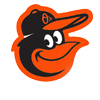
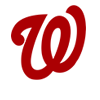

-1745819772711.png)
